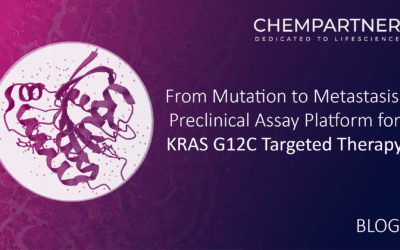On October 5, 2020, the Nobel Assembly at the Karolinska Institute announced the Nobel Prize for Physiology or Medicine went to Harvey J. Alter, Michael Houghton, and Charles M. Rice “for their discovery of hepatitis C virus (HCV).”
The worldwide incidence of HCV infections is approaching 200 million, with over 5 million in the U.S. alone. HCV presents a chronic disease that is largely asymptomatic and progresses slowly over several decades to cause severe liver damage to the host. It kills half a million patients a year.
The discovery of HCV paved the way for blood testing and finding effective treatments, which now represent a cure. This is a resoundingly worthy award. All three awardees this year previously received the Lasker Award, an American award widely viewed as a forerunner of the Nobel Prize. Even so, when Alter was woken up by phone calls from Stockholm at mi-night, he was annoyed and did not pick up until the third time. Apparently, he was not waiting by the phone for a call!
This year’s award for virology is in-line with the Nobel Committee’s long tradition of awarding the discoveries of major viruses. To be sure, the Nobel Foundation rarely gives out prizes for discovering a virus until a treatment, a cure, or a vaccine has been found. Otherwise, awarding the discovery of a killer virus would be viewed as “bad form.” No doubt, the fact that the on-going COVID-19 epidemic caused by SARS-CoV-2 is wreaking havoc around the world provided additional incentive for Stockholm to favor an award for virology.
The first Nobel Prize for the discovery of a virus went to Peyton Rous in 1966. In 1909, Rous at the Rockefeller Institute succeeded in transplanting the avian sarcoma tumor from an old barred Plymouth Rock hen to other hens in the same bloodline. He also achieved the same feat by injections of cell-free filtrates that held back minuscule particles such as bacteria or tiny fragments. This was a good indication that the agent was living, that is, a virus. It was later termed Rous sarcoma virus (RSV). Alas, it was not until 55 years later, at the age of 89 and still working, Rous was bestowed the 1966 Nobel Prize in Medicine for “his discovery of tumor-inducing viruses.” He is widely considered the father of tumor virology.1
Ten years later, the Nobel Prize in 1976 was bequeathed to Baruch Blumberg for his landmark discovery of the Australian antigen associated with hepatitis B virus (HBV), another cancer-causing virus. In 1968, Baruch Blumberg demonstrated that blood from hepatitis patients contained the Australian antigen, an antigen first isolated from a blood sample from an Australian aborigine. His seminal work proved that the Australian antigen was the surface antigen of a hepadnavirus to be later called HBV, the virus that caused hepatitis B. Hepatitis B was found to work in tangent with another risk factor to cause hepatocellular carcinoma (HCC). By coincidence, the future 2020 Nobel Laureate Harvey Alter worked with Blumberg on HBV while Alter was a junior researcher at the National Institute of Health (NIH) in 1964.2
2008 was a banner year for virology. In addition to the long-expected award for the discovery of human immunodeficiency virus (HIV) by Luc Montagnier and Françoise Barré-Sinoussi from France, Harald zur Hausen in Germany was also awarded half of the prize “for his discovery of human papillomaviruses (HPVs) causing cervical cancer.” In 1974, based on the observation that genital warts infrequently become malignant, zur Hausen proposed that HPV could represent the etiologic agent for cervical cancer. In the early 2000s, zur Hausen discovered novel HPV DNA in cervical cancer biopsies and subsequently cloned HPV16 and HPV18 subtypes from patients with the disease. Both HPV16 and HPV18 account for two-thirds of all cervical cancers worldwide. Cervical cancer is the second most common cancer among women right behind breast cancer. Now HPV vaccines Gardasil by Merck and Cervarix by GlaxoSmithKline are widely used as prevention of cervical cancers in women.3
The discovery of HIV was among the most dramatic events in the 1980s, and it was tainted by great scientific controversy. The reality was even more dramatic than fiction. Montagnier and Barré-Sinoussi at the Pasteur Institute isolated and characterized HIV in 1983. Their collaboration with Robert Gallo at the National Cancer Institute (NCI) of NIH led to a long and acrimonious dispute concerning the priority of discovery and a patent dispute for an HIV blood test. It took an NIH and a US Congressional investigations into Gallo’s scientific (mis-)conducts and interventions by Jonas Salk, French Prime Minister Jacques Chirac, and American President Ronald Reagan to settle the lawsuits between the Pasteur Institute and the NCI.4
Now back to the discovery of HCV.
There are at least five subtypes of hepatitis viruses: A, B, C, D, and E. In particular, HCV was discovered in 1989, merely some thirty years ago. Opportunely, when the Nobel Prize was awarded this year, many cures already exist for hepatitis C, which causes at least 85% of the cases of transfusion-associated hepatitis. There were 71 million chronic carriers of HCV worldwide in 2017 although there were 170 million back in 1999, about 3% of the world’s population. Without treatment, the HCV infection can cause liver cirrhosis and HCC, which then require liver transplantation.
More than two thousand years ago, Hippocrates recorded an epidemic jaundice, which was likely caused by a hepatitis virus. In the 1960s, Saul Krugman confirmed the two distinct forms of viral hepatitis: hepatitis A and hepatitis B. While hepatitis A is highly contagious, hepatitis B is mostly limited to blood transfusion. The HAV was identified in 1977 at the NIH using an electron microscope and specific serology for hepatitis A virus (HAV) antigen. We already mentioned Blumberg’s discovery of HBV using the Australian antigen.
Back in 1975, Harvey Alter and coworkers at NIH discovered the most cases of transfusion-associated hepatitis did not have a serological marker of either HAV or HBV. He called the “new” disease non-A, non-B viral hepatitis. A frustrating period of 14 years followed, during which the methods used to successfully to identify HAV and HBV all failed to result in the molecular identification of the etiological agent of the causative agent of this disease. The traditional techniques to identify the virus included tissue culture growth, electron microscope, and serological identification. The causative agent, later named as hepatitis C virus (HCV), was eventually discovered in 1989 by Michael Houghton and coworkers using exclusively molecular biology techniques. Quoting Alter,
“the cart has led the horse: Descartes before the horse!”5
Houghton’s group at Chiron Corporation, a biotech company in Emeryville, California, accomplished cloning of a large portion of the HCV genome with a large volume of chimpanzee plasma, provided by Dan Bradley at the Centers for Disease Control and Prevention (CDC). The chimpanzee plasma had shown to have an unusually high infectivity titer. The cloning of HCV was initiated by ultracentrifugation of the chimpanzee plasma. Genomic characterizations through cloning revealed that the virus was an RNA virus related to the flavivirus family. This discovery represented the first time that a new virus was identified using exclusively molecular biology techniques from the blood of an experimentally infected chimpanzee.
Immediately following the cloning of the virus, Houghton and Qui-Lim Choo in his group developed a diagnostic assay for detecting anti-HCV. Second cloning in yeast resulted in an antigen from three contiguous genomic segments or epitopes. This led to the development of the first-generation enzyme-linked immunosorbent assay (ELISA). Later on, more sensitive enzyme immunoassays and molecular biology-based assays were developed to detect HCV ribonucleic acid (RNA) in body fluid.
In Houghton’s lab, Choo provided many years of outstandingly dedicated and precise molecular biology expertise. Meanwhile, Houghton’s colleague George Kuo provided intellectual and practical input.6 Houghton treasures his co-workers’ contributions to the discovery of HCV, and in 2013, when he was bestowed a $100,000 award by the Gairdner Foundation, he turned down Canada’s most prestigious science award because his close collaborators Choo and Kuo were not included. Currently, Houghton is a professor at the University of Alberta. His Nobel Prize quenched the century-long draught of Canadian’s Nobel Prize in Physiology or Medicine. The last Canadian who won such an accolade was Frederick Banting in 1923 for his discovery of insulin.
Confirmation of the accuracy and fidelity of the Chiron’s diagnostic assay was carried out in Alter’s group at NIH. The Chiron test detected all but one of the previous putative non-A, non-B viral hepatitis sera in the panel, and had no discordant results on duplicate analysis and no false-positive results. The one sample missed was obtained during the acute phase of the disease and, thus, during the window period before the antibody developed.5
Charles Rice at Washington University at the time completed the characterization of the viral genome in 1996 and a year later succeeded in producing an infectious virus in the lab. He went on to develop sub-genomic amplicons of the virus that could replicate in cells without producing live virus, which made it possible to design assays to test for drugs capable of directly inhibiting viral replication.7,8 Rice’s discoveries were instrumental to the discovery of anti-HCV drugs. Below is a portion of the HCV genome. Nearly all HCV non-structural proteins have proven to be valid targets for inhibiting HCV replication.
Since the discovery of HCV, academia, government agencies, and especially the pharmaceutical industry have invested a tremendous amount of resources and have discovered many effective anti-HCV drugs. A cure can now be achieved as measured by the so-called sustained virologic response (SVR). Eradication of HCV may be achieved in the foreseeable future. But the discovery of anti-HCV drugs is the topic for another chapter.
Finally, here is the list of all virus-related Nobel Prizes:
- 1966, Discovery of RSV, Peyton Rous
- 1976, Discovery of HBV, Baruch Blumberg
- 2008, Discovery of HIV, Luc Montagnier and Françoise Barré–Sinoussi
- 2008, Discovery of HPV, Harald zur Hausen
- 2020, Discovery of HCV, Harvey Alter, Michael Houghton, and Charles Rice
References
- Weiss, R. A.; Vogt, P. K. 100 Years of Rous Sarcoma Virus In Journal of Experimental Medicines 2011, 208(12), 2351–2355.
- Block, T. M.; Alter, H. J.; London, W. T.; Bray, M. A historical perspective on the discovery and elucidation of the hepatitis B virus, In Antiviral Research 2016, 131, 109–123.
- Hampton, T. Nobel Honors HIV, HPV Discoveries In JAMA 2008, 300(18), 2109.
- Vahlne, Aners A Historical Reflection on the Discovery of Human retrovirus In Retrovirology 2009, 6, 40.
- Alter, H. J. Descartes before the Horse: I Clone, Therefore I Am: The hepatitis C Virus in Current Perspective, In Ann. Intern. Med. 1991, 115(8), 644–649.
- Houghton, M. Discovery of hepatitis C virus, In Liver International 2009, 29, 82–88.
- Lindenbach, B. D.; Rice, C. M. Unravelling hepatitis C virus replication from genome to function, In Nature 2005, 436(18), 933–938.
- Tellinghuisen, T. L.; Evans, M. J.; von Hahn, T.; You, S.; Rice, C. M. Studying Hepatitis C Virus: Making the Best of a Bad Virus, In J. Virol. 2007, 81(17), 8853–8867.




